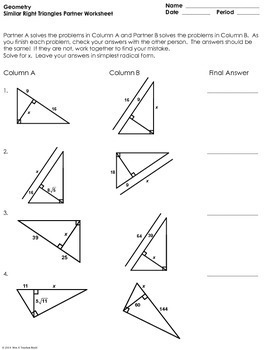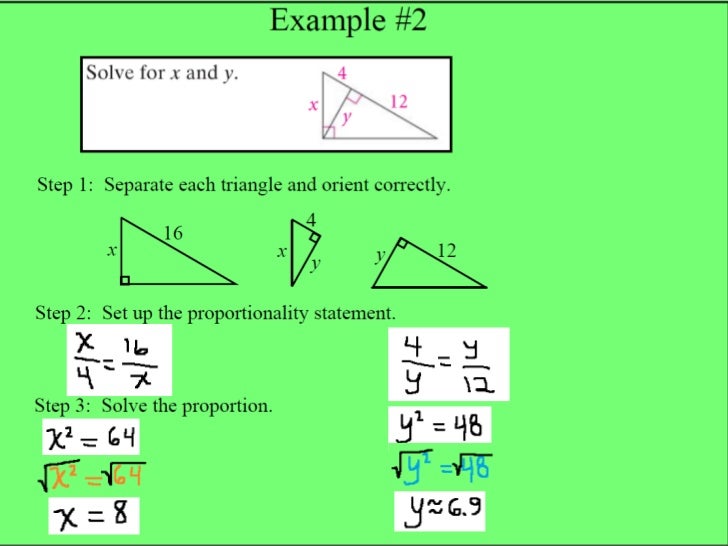

Compare transformations that preserve distance and angle to those that do not (e.g., translation versus horizontal stretch).ĬCS.3: Given a rectangle, parallelogram, trapezoid, or regular polygon, describe the rotations and reflections that carry it onto itself.ĬCS.4: Develop definitions of rotations, reflections, and translations in terms of angles, circles, perpendicular lines, parallel lines, and line segments.ĬCS.5: Given a geometric figure and a rotation, reflection, or translation, draw the transformed figure using, e.g., graph paper, tracing paper, or geometry software. Together we are going to use these theorems and postulates to prove similar triangles and solve for unknown side lengths and perimeters of .HSG-CO: Congruence -CO.A: Experiment with transformations in the planeĬCS.1: Know precise definitions of angle, circle, perpendicular line, parallel line, and line segment, based on the undefined notions of point, line, distance along a line, and distance around a circular arc.Ĭonstructing Parallel and Perpendicular LinesĬCS.2: Represent transformations in the plane using, e.g., transparencies and geometry software describe transformations as functions that take points in the plane as inputs and give other points as outputs. If a segment is parallel to one side of a triangle and intersects the other two sides, then the triangle formed is similar to the original and the segment that divides the two sides it intersects is proportional. Just as two different people can look at a painting and see or feel differently about the piece of art, there is always more than one way to create a proper proportion given similar triangles.Īnd to aid us on our quest of creating proportionality statements for similar triangles, let’s take a look at a few additional theorems regarding similarity and proportionality.ġ.

As ck-12 nicely states, using the SAS similarity postulate is enough to show that two triangles are similar.īut is there only one way to create a proportion for similar triangles? Or can more than one suitable proportion be found? Triangle Similarity Theorems This too would be enough to conclude that the triangles are indeed similar. Or what if we can demonstrate that two pairs of sides of one triangle are proportional to two pairs of sides of another triangle, and their included angles are congruent? In other words, we are going to use the SSS similarity postulate to prove triangles are similar. What happens if we only have side measurements, and the angle measures for each triangle are unknown? If we can show that all three sides of one triangle are proportional to the three sides of another triangle, then it follows logically that the angle measurements must also be the same.

There are two other ways we can prove two triangles are similar. Thanks to the triangle sum theorem, all we have to show is that two angles of one triangle are congruent to two angles of another triangle to show similar triangles.īut the fun doesn’t stop here. AA TheoremĪs we saw with the AA similarity postulate, it’s not necessary for us to check every single angle and side in order to tell if two triangles are similar. By definition, we know that if two triangles are similar than their corresponding angles are congruent and their corresponding sides are proportional. How do we create proportionality statements for triangles? And how do we show two triangles are similar?īeing able to create a proportionality statement is our greatest goal when dealing with similar triangles. In total, there are 3 theorems for proving triangle similarity:

Jenn, Founder Calcworkshop ®, 15+ Years Experience (Licensed & Certified Teacher)


 0 kommentar(er)
0 kommentar(er)
